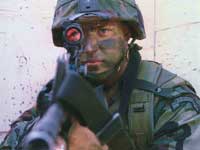 Who bears the burden? Democratic characteristics of US Military recruits before and after 9/11
Who bears the burden? Democratic characteristics of US Military recruits before and after 9/11
by Tim Kane, Ph.D.
A few Members of Congress, motivated by American combat in the Middle East, have called for the reinstatement of a compulsory military draft. The case for coercing young citizens to join the military is supposedly based on social justicethat all should serveand seems to be buttressed by reports of shortfalls in voluntary enlistment. In a New York Times op-ed on December 31, 2002, Representative Charles Rangel (DNY) claimed, A disproportionate number of the poor and members of minority groups make up the enlisted ranks of the military, while most privileged Americans are underrepresented or absent.1 This claim is frequently repeated by critics of the war in Iraq.2 Aside from the logical fallacy that a draft is less offensive to justice than a voluntary policy, Rangel’s assertions about the demographic makeup of the enlisted military are not grounded in fact.
Although all branches of the armed services have been able to meet recruiting goals in recent years, the Army’s difficulty in meeting its goal of 80,000 new soldiers in 2005 has been widely reported, and some view it as a symbol of the need to reinstate the draft. However, this shortfall should be placed in the proper context. The Army is projected to fall just 7,000 (about 9 percent) short of its 2005 recruitment goal, which is less than 1 percent of the overall military of over 1 million personnel…

ATTENTION READERS
We See The World From All Sides and Want YOU To Be Fully InformedIn fact, intentional disinformation is a disgraceful scourge in media today. So to assuage any possible errant incorrect information posted herein, we strongly encourage you to seek corroboration from other non-VT sources before forming an educated opinion.
About VT - Policies & Disclosures - Comment Policy



